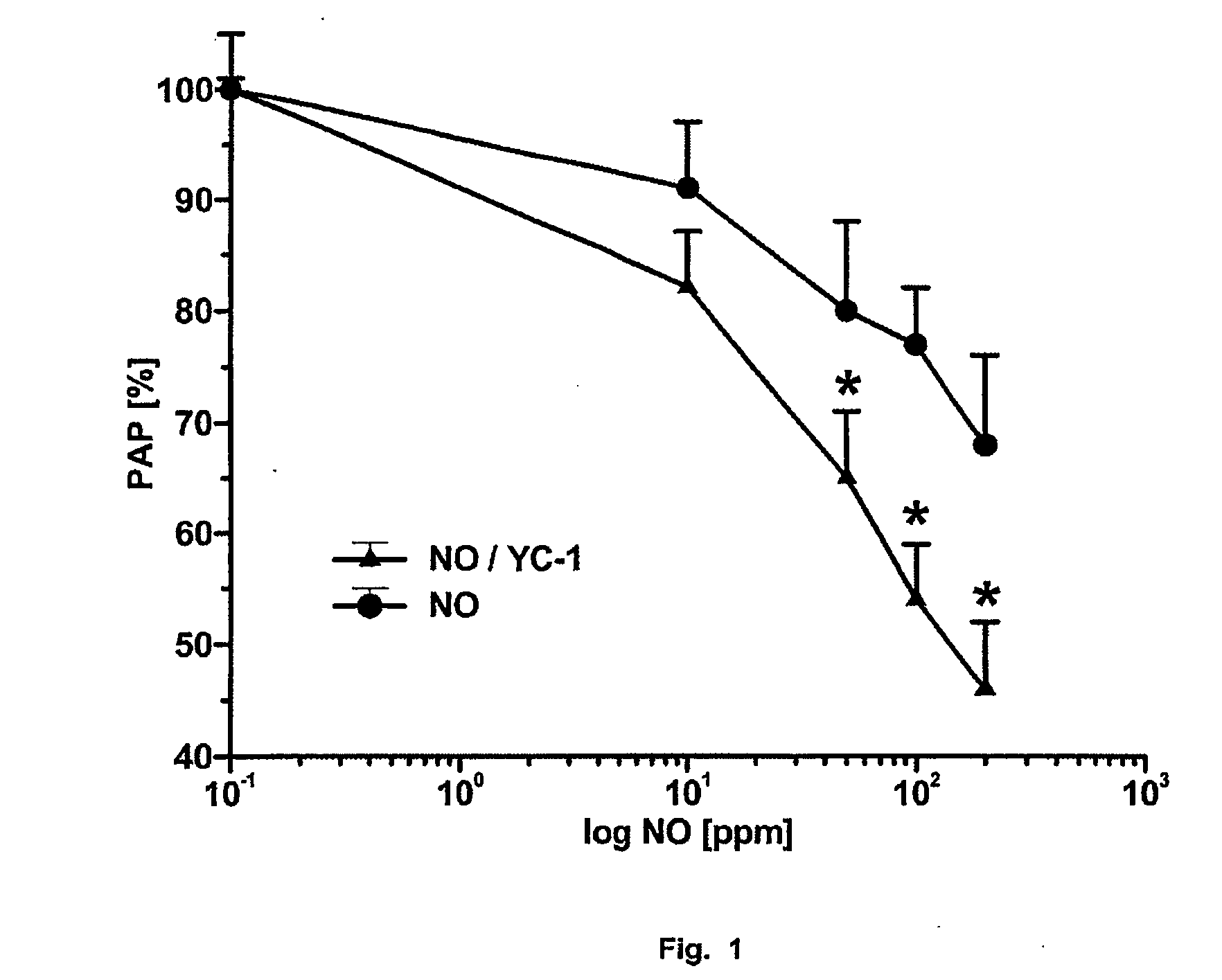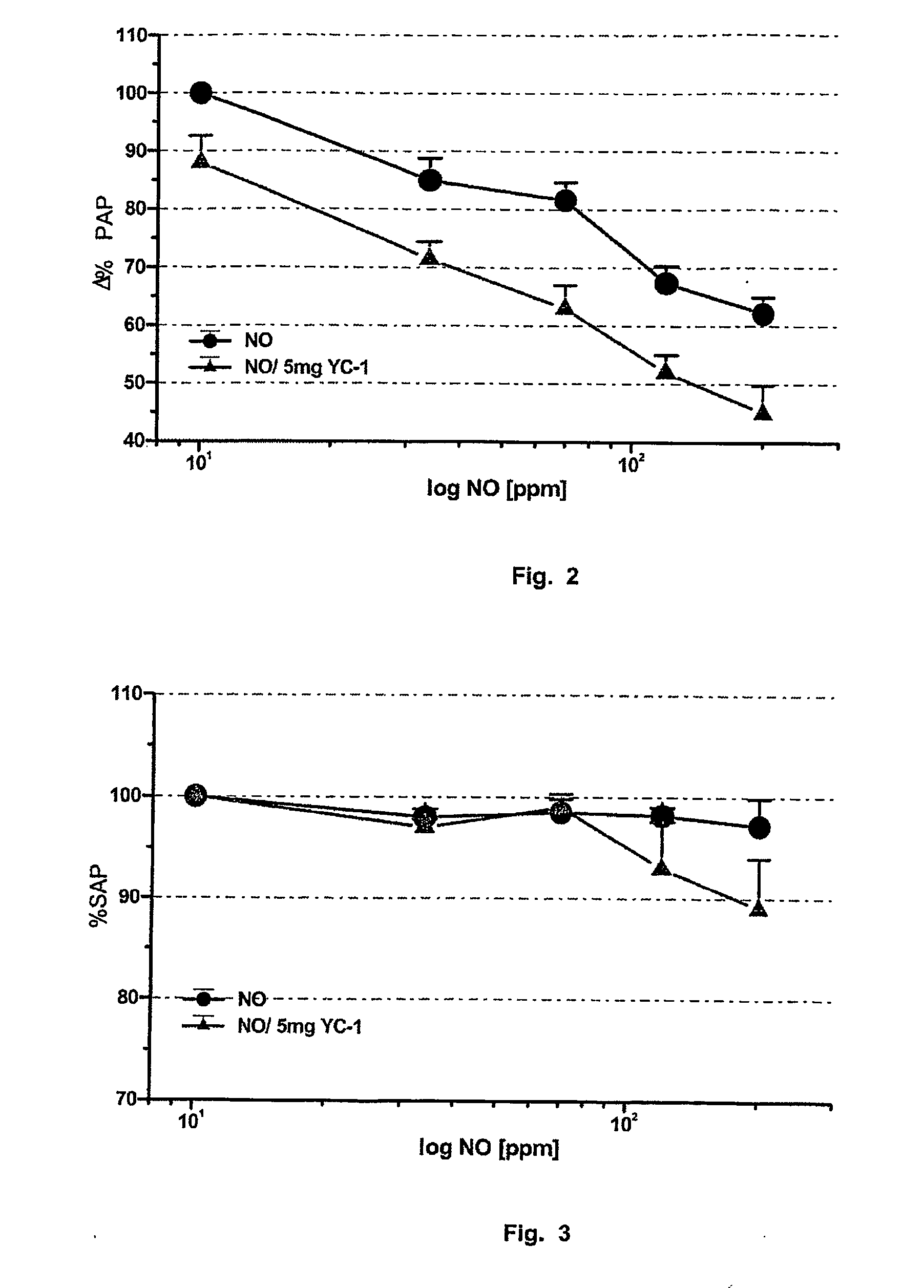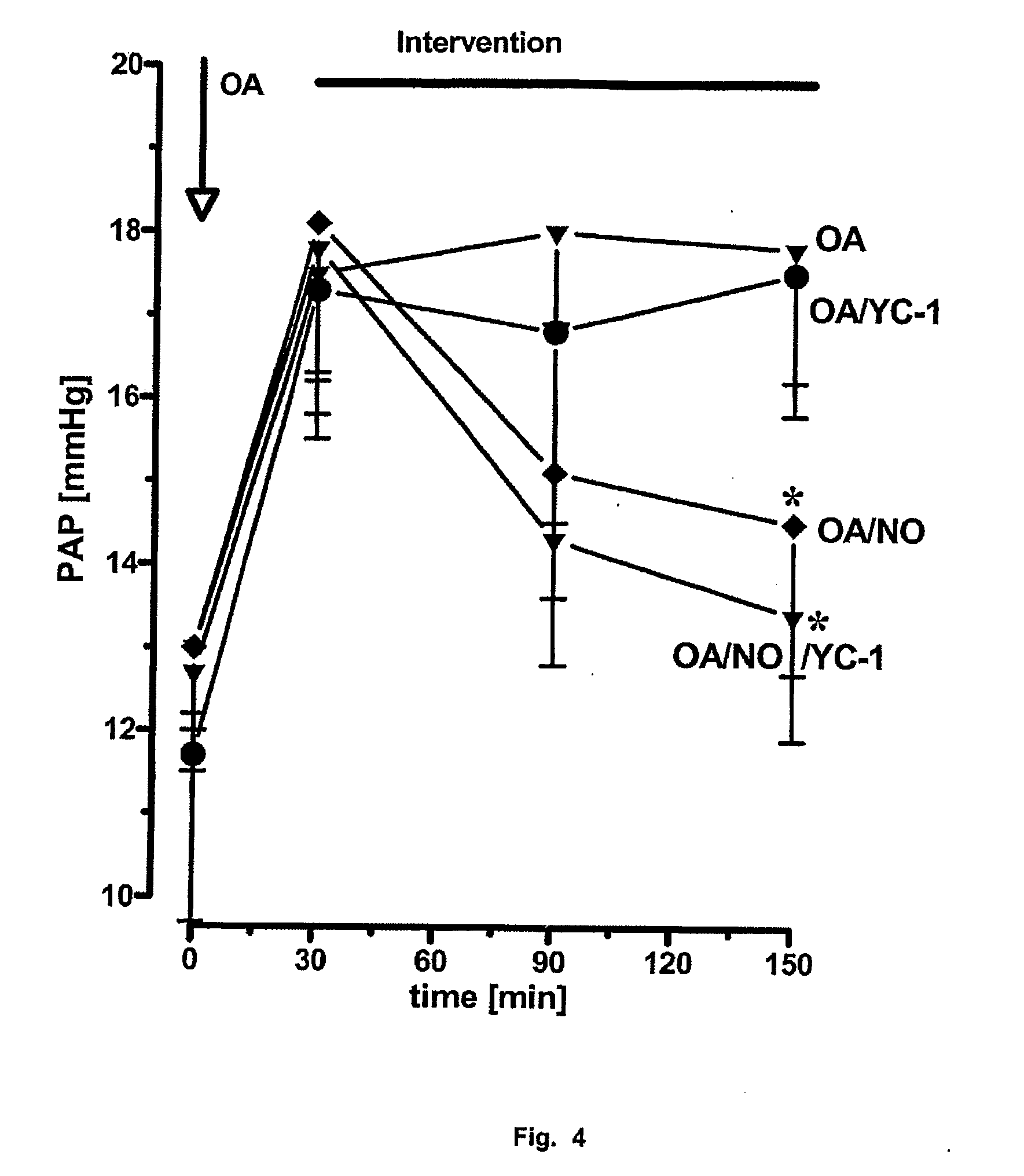Novel use of guanylate cyclase activators for the treatment of respiratory insufficiency
a technology of guanylate cyclase and activator, which is applied in the direction of plant growth regulators, biocide, cyclic peptide ingredients, etc., can solve the problems of deteriorating gas exchange function, poor or absolutely no ventilation area, and more or less pronounced collapse of gas exchange function, so as to improve gas exchange function and improve oxygen content of patient's blood.
- Summary
- Abstract
- Description
- Claims
- Application Information
AI Technical Summary
Benefits of technology
Problems solved by technology
Method used
Image
Examples
example 1
Model of the Isolated, Bloodlessly Perfused and Ventilated Rabbit Lung
[0110] The test animal was anaesthetized by injection of about 700 μl of a mixture of Ketanest and Rompun in the ratio 3:2. The spontaneous breathing of the animal was maintained with this initial anaesthesia. 1 000 I.U. of heparin per kg of bodyweight were injected through the venous access for anticoagulation. For the intubation, 7 ml of Xylocaine were injected into the subcutaneous tissue of the animal's neck. A tube was introduced into the trachea underneath the larynx and was used from this instant onwards to ventilate the animal with ambient air through the ventilating pump (breathing rate: 30 s−1, tidal volume 30 ml). About 3 ml of the anaesthetic mixture were administered over a period of 15 min. The lungs were then removed by a standard technique; likewise dissection of the pulmonary artery and the ascending aorta.
[0111] To make it possible to remove the lung from the body's own perfusion without inter...
example 2
Whole Animal Model of Acute Pulmonary Hypertension with Severe Gas Exchange Impairment Through Infusion of Oleic Acid
[0117] The test animals In the rabbit model were anaesthetized by injection of about 700 μl of a mixture of Ketanest and Rompun in the ratio 3:2. The spontaneous breathing of the animal was maintained with this initial anaesthesia. 1 000 I.U. of heparin per kg of bodyweight were injected for anticoagulation. For the intubation, 7 ml of Xylocaine were injected into the subcutaneous tissue of the animal's neck. A tube was introduced into the trachea underneath the larynx and was used from this instant onwards for ventilation of the animal through the ventilation pump (breathing rate: 25 s−1, tidal volume 35 ml). The animal underwent standard ventilation with a 50% N2 and a 50% O2 gas mixture. 7 ml / h of the anaesthetic mixture were administered through a Perfusor, which led to a deep analgesia and relaxation of the animal. The left common carotid artery was ligated and...
PUM
 Login to View More
Login to View More Abstract
Description
Claims
Application Information
 Login to View More
Login to View More - R&D
- Intellectual Property
- Life Sciences
- Materials
- Tech Scout
- Unparalleled Data Quality
- Higher Quality Content
- 60% Fewer Hallucinations
Browse by: Latest US Patents, China's latest patents, Technical Efficacy Thesaurus, Application Domain, Technology Topic, Popular Technical Reports.
© 2025 PatSnap. All rights reserved.Legal|Privacy policy|Modern Slavery Act Transparency Statement|Sitemap|About US| Contact US: help@patsnap.com



